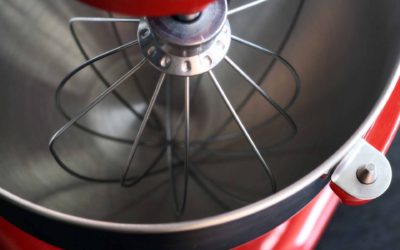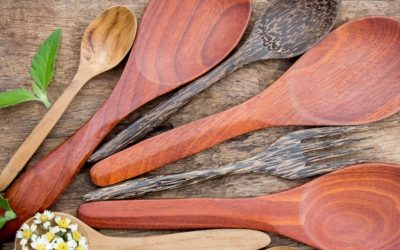Cleaning your Commercial Deep Fryer Made Easy
June 9, 2017A commercial deep fryer requires daily cleaning to keep the appliance in perfect working condition.
However, cleaning the restaurant’s deep fryer is one of the most dreaded tasks for many restaurant workers. Who could blame them? The process of cleaning a deep fryer can be messy, especially if you don’t do it very often.
Although it may take longer than washing dishes, cleaning your deep fryer frequently before serious residue builds up will make it much easier to clean. If your deep fryer is in frequent use, every few days it should be cleaned and the oil should be changed. Otherwise, if your deep fryer is not being used often, you can simply clean it each time you use it. No matter how frequently you get to clean your appliance, it requires the same procedure. Therefore, this is a guide to make cleaning easier for you.
- Unplug the Deep Fryer
Always unplug your deep fryer before you clean it. To avoid burns, always let the deep fryer completely cool down before cleaning it. Let it cool down on its own. Do not put water in with the hot oil – it could explode.
- Drain the Oil
Drain the oil into a filtration bin or a food safe container. Close the container by sealing the lid, and keep the oil a cool place if you plan to use it again. Throw the oil away in a container with a tight seal if it is not useful anymore. Most people know that oil can clog a drain, but be sure to advise your employees not to pour the oil down the sink – just in case.
- Remove the Utensils and Baskets
The tongs and deep fry baskets should be cleaned separately from the commercial fryer itself. Put them in the sink with some dishwashing liquid to soak before cleaning.
- Wipe the Remaining Oil off the Pot
To remove the oil and stuck-on food from the deep fryer pot, simply wet a sponge or some paper towels and wipe the grime off. Some food can be quite stuck on, so you might to use a spatula or scraper to remove it.
- Boil Water
Put water into the vat and mix it with a cleaning solution as recommended in your manual for a boil out. Bring that vat of water to a boil, letting it coax off any remaining food particles. Unplug the deep fryer and let it cool down before draining the vat into a separate container. Rinse everything out.
- Wash the Basket
Using warm water and a scrub brush, the basket can be rinsed clean, doing away with food particles. Remove the soap by rinsing the basket, and soak up the water with a paper towel.
- Refill the Deep Fryer with Oil
After making sure the water has been completely drained out from the deep fryer, refill the vat with your preferred oil. And you’re done.
Cleaning your deep fryer doesn’t have to be a serious chore. Don’t let it get dirty and your customers will thank you.
5 Keys to Creating the Perfect Restaurant Seating Areas
Restaurants are about so much more than just food. From the setting and layout of your restaurant to your choice of colors, it takes a lot more than an appealing menu to keep diners coming back for more. When setting up your restaurant, booths and chairs are important...
5 Essential Buying Tips for Your Next Food Prep Work Table
The right foodservice equipment is pivotal to the efficiency of your kitchen. One of the most important types of foodservice equipment for any kitchen is the work table. With limited room on countertops available for your food prep needs, the cooking process can drag...
Tips for Keeping Your Commercial Sink Sparkling Clean
Your commercial kitchen, just like your personal kitchen, must be kept clean at all times. With all of the cooking and food processing you do, it is inevitable that your sink gets messy. Cleaning up your commercial kitchen is incomplete without proper cleaning of your...
Food-Cutting Secrets to Beautiful Dishes
In the restaurant industry, presentation is often said to be just as important as the food itself. Using the right knowledge, skills and restaurant supplies, you can incorporate creativity into your presentation, making guests feel that they are getting something...
Top Space-Saving Tips for Commercial Kitchens
Top Space-Saving Tips for Commercial Kitchens Space is always an important consideration when setting up a kitchen, and this is even truer for commercial kitchens. With a strong focus on functionality and the kitchen supplies that meet the needs of your commercial...
5 Ways to Get the Most Out of Your Mixer
No one wants to eat off of dirty or tarnished silverware. A stand mixer is a highly useful piece of kitchen equipment to invest in. Although this type of kitchen equipment does not usually come cheap, it can last a lifetime when properly cared for. Despite all your...
Restaurant Prep Tool Selection Simplified
What’s a restaurant kitchen without high-quality prep tools that can withstand the pressure of frequent use? Whether you already have a restaurant you’re running, or you’re just planning to launch one, one vital factor that could make or mar your business is how you...
Beginner’s Guide to Choosing a Commercial Ice Cream Freezer
Ice cream is a delicious and appealing desert treat for everyone, young or old. Having made the decision to sell ice cream to your customers, whether you have a restaurant, convenience store, or specialty ice cream parlor, it is time to begin stocking up on the right...
How to Choose the Right Kitchen Scales for Your Restaurant
A food scale is an essential item in every restaurant’s store of kitchen supplies. Designed to take the guesswork out of food measurement and maintain consistent food serving sizes, food scales are indispensable kitchen supplies in the commercial kitchen. With such a...
Beer Chilling Systems: Which Type Is Right for My Restaurant?
A refrigeration unit is integral to the functioning of any restaurant. Beers are best served cold - there’s no questioning that! But which beer chilling system is the best? From reach-in coolers to glycol chillers, a beer chilling system is an important piece of...
What Equipment Will I Need to run a Food Truck?
There’s a lot of planning that goes into starting your own food truck business. Before you hit the road with your delicious food offerings, you’ll need to fill up your truck with all the right foodservice equipment. Considering the lengthy list of possible items to be...
8 Types of Food Thermometers: What You Need To Know
Food thermometers are essential restaurant supplies for your commercial kitchen. They ensure that foods prepared in your commercial kitchen are cooked to the right temperature and held at that temperature for as long as necessary to kill any harmful bacteria. This...
How to Identify the Best Food Processor for Your Needs
Highly versatile and extremely efficient, food processors are designed to take away the hard work from repetitive kitchen activities. This type of cooking equipment can quickly become an invaluable tool in your kitchen. From chopping, to shredding, grinding, mincing,...
6 Keys to Choosing the Best Chafing Dishes for Your Restaurant
The chafing dish, also known as the chafer, is an essential piece of restaurant equipment for any establishment that wants to keep food hot. This type of restaurant equipment gets its name from the French word, chauffer, which means to heat, and it’s easy to see why....
Turning up the Dial on Commercial Fryers: How to Choose One for Your Restaurant
Fried food is a well-loved favorite. This is a fact. It also makes a fryer an important piece of equipment to have in your commercial kitchen. Just consider how many appetizers and sides require frying: onion rings, French fries, and fried green tomatoes are just a...















